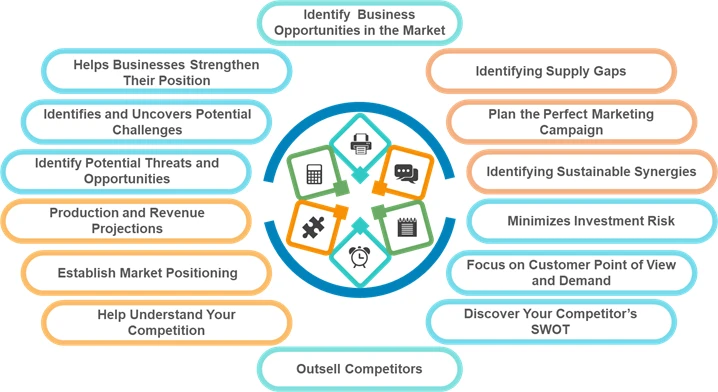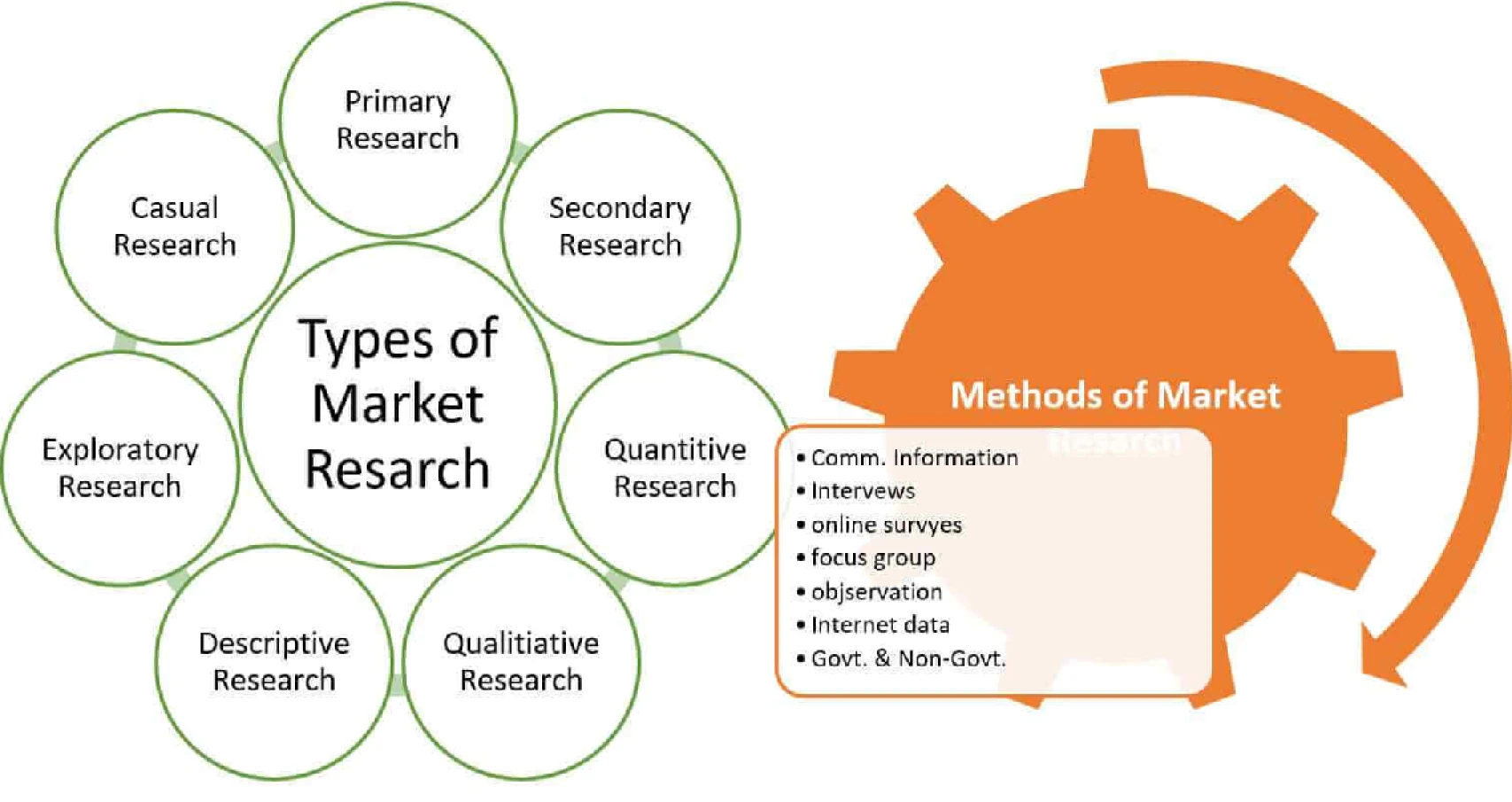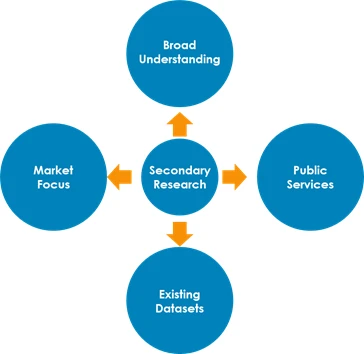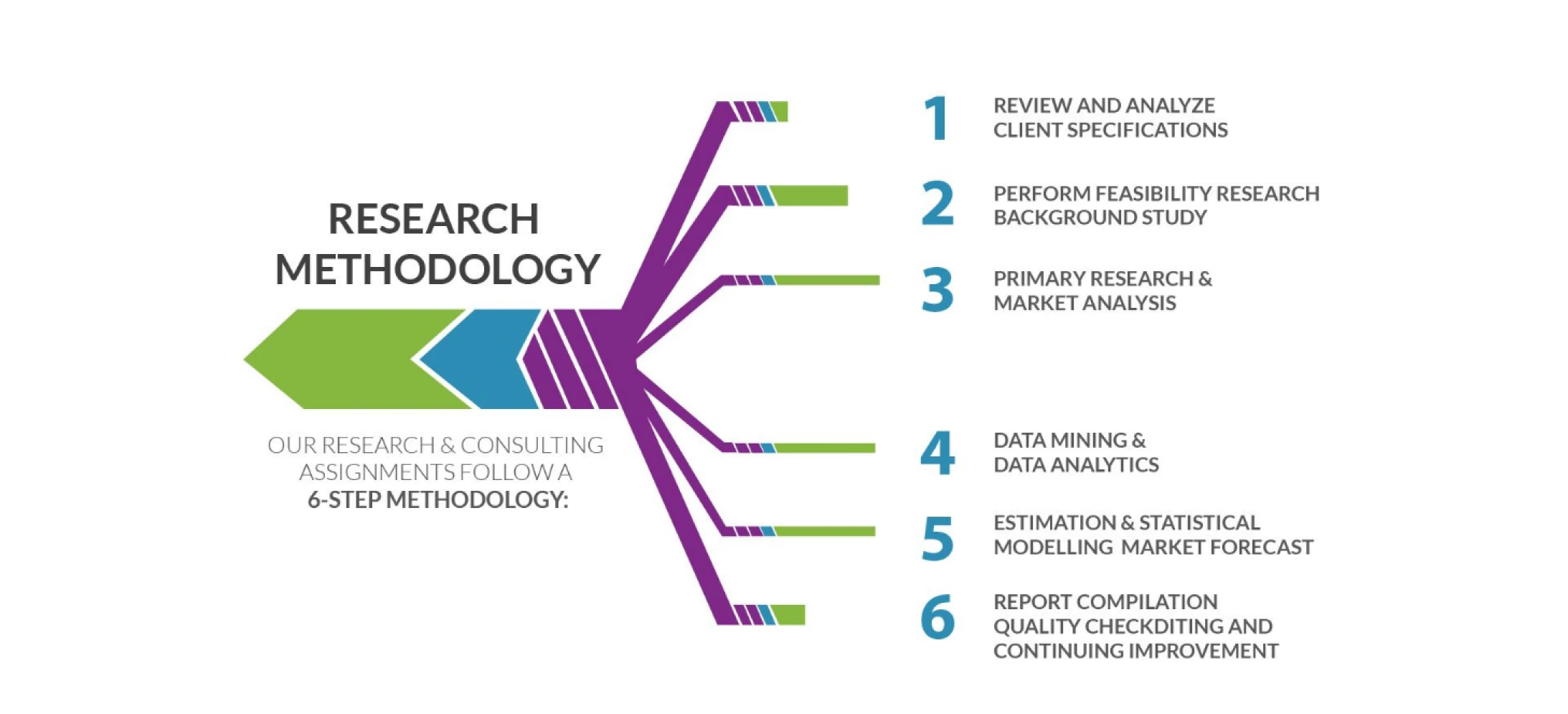Research Methodology
Today, majority of the business executives are concerned about competition from disruptive businesses. They fear the risk being left behind. Outmanoeuvred by better informed, faster-moving competitors.
This is why market research has become important and vital in today’s business landscape: An essential tool for success.
Market research is available as a service to help any company, service provider, individual or organisation make better, more informed decisions.
The more research is embedded in the strategic plans of a firm, the better equipped it is to deal with the changing environment within which it operates. It gives valuable insights that protect market position.

Market Research
- Helps businesses strengthen their position and stay ahead of the competition. (Identify the problem areas as well as strong areas)
- Minimises any investment risk (minimize losses). Tells which risks to take and increases earning potential.
- Identifies potential threats and opportunities.
- Helps to discover self and competitor’s strengths and weaknesses.
- Facilitates strategic planning.
- Adaptation to change. Helps set business goals.
- Helps in spotting emerging trends. Helps to expand and innovate.
- Assists businesses in staying ahead of the competition.
- Provides revenue projections.
- Focuses on customer needs and demands.
- Helps to evaluate the success of a business against benchmarks.
- Plan the perfect marketing campaign.
- Financial planning & resource allocation.
Market Research is about intelligence, numbers. Thus, businesses can make data-driven decisions that drive growth, innovation and competitive advantage.
We at Persistence Market Research adopt a robust research methodology that addresses the research aims, objectives, and research questions.
We systematically design a study to ensure valid and reliable results.
It is specifically how we go about deciding
- Why to conduct research (i.e. goals, objectives, etc.)
- What type of data to collect (e.g., qualitative or quantitative data)
- Where to focus (e.g. geography, demographics, etc.)
- Who to collect it from (i.e., the sampling strategy);
- When to complete (i.e. analysis, results, etc.)
- How to collect it (i.e., the data collection method);
- How to analyze it (i.e., the data analysis methods)
Hypothetical Scenario
- If you're planning a market research project, don't forget to start with the WHY! (Sales loss, market share, new product testing, etc.)
- Good project planning needs a clear grasp of the project's geography and fieldwork location, known as the "WHERE" component. (Effective project teams prioritize the WHERE and use it to drive project planning and execution)
- A project's initial phase involves defining the project's "WHO". This includes identifying all stakeholders and determining who will be responsible for project execution. (Keep all informed about project development, including challenges)
- The success of a project hinges on its proper execution and effective utilization of results. The “HOW” of a project is crucial to achieving these goals (A combination of methods - primary and secondary - will be used to access the desired information)
- The "WHAT" of a market research project is closely related to the "WHY" and "HOW" aspects of the project. (Recommendations require implementation consideration for product modifications and new product development)

Our methodology justifies the design choices by showing that the chosen methods and techniques are the best fit for the research aims, objectives, and research questions.
Research Methods
- Qualitative - to measure and quantify variables [when the research aims, and research questions are exploratory. For example, a qualitative methodology might be used to understand people’s perceptions about an event that took place, or a political candidate running for president; are used to collect and analyze non-numerical data],
- Quantitative - to understand the meaning and complexity of phenomena [when the research aims and research questions are confirmatory, used to collect and analyze numerical data. For example, a quantitative methodology might be used to measure the relationship between two variables (e.g., personality type and likelihood to commit a crime) or to test a set of hypotheses], and
- Mixed methods [attempts to combine the best of both qualitative and quantitative methodologies to integrate perspectives and create a rich picture] are different types of methodological approaches, distinguished by their focus on words, numbers, or both.
So, it's crucial to choose the right method for your data collection needs. The most used methods for collecting data include:
- Interviews (which can be unstructured, semi-structured, or structured)
- Focus groups and group interviews
- Surveys (online or physical surveys)
- Observations (watching and recording activities)
- Documents and records (e.g., financial reports, court records, etc.)

Predominantly, we adopt Secondary Research, interspersed with Primary Research (Delphi technique, in-depth interviews with industry experts).
Primaries are undertaken to not only understand industry perspectives about the industry and the direction of the industry but also to validate our secondary research outcomes/ findings.


Using data from different times, spaces, and people prompts us for data triangulation.
Triangulation helps us
- get a more complete understanding of the research,
- be more confident about our output,
- helps us with a more holistic perspective.
That's why our findings reflect reality.
- The use of multiple methods/ sources of data or investigators increases | enhances the validity, reliability, and credibility of our findings.
- The more our data converge, or agree with each other, the more credible our results will be.
Relying on only one data source, methodology, or investigator, we may risk bias in the research.
- Observer bias may occur when there’s only one researcher collecting data.
- Similarly, using just one methodology means you may be disadvantaged by the inherent flaws and limitations of that method.
Thus, triangulation helps in capturing the complexity of real-world phenomena. By varying our data sources, theories, and methodologies, we gain insights into the research problem from multiple perspectives and levels.